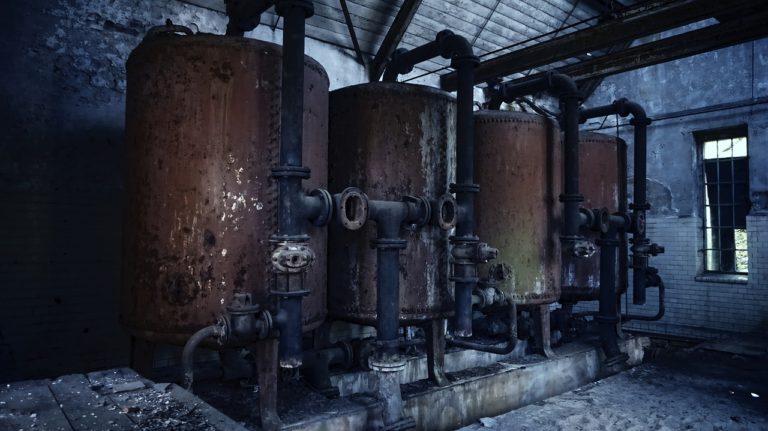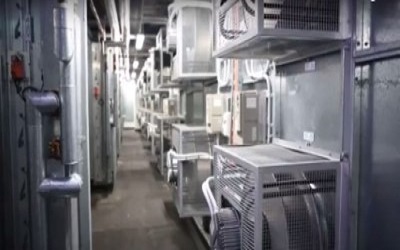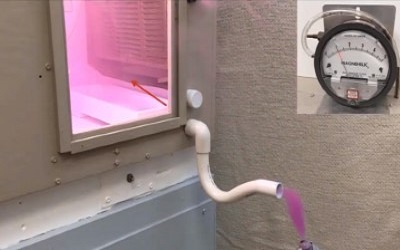Hydronics Heating - How to increase Condensing Boilers System Efficiency
Hydronics Heating - How to increase Condensing Boilers System Efficiency
What is an efficient condensing boiler, to be exactly how should we operate our condensing boilers in our hydronics heating system?
What should we looked at when we talk about upgrading the hydronics heating systems to make it even more efficient? What are those components? What do they do? How do they affect their efficiencies? How do they affect fuel consumption? And where’s the low hanging fruit? We’re going to touch on the hydronics system i.e. condensing boilers, pumps and controls, these are the three primary things directly or indirectly affect the hydronics heating water system efficiency.
There are lots of opportunities for efficiency gain in heating systems when done correctly. For a start, do not oversize your heating system. Back in the days, boiler equipment is single stage. It can only be ON, or it was OFF. Were they the right size?
If you are not operating your condensing boiler as it is intended, might as well not upgrade them!
An effective heat loss and gain calculation is the foundation of any heating design. Understanding what you need for a boiler plant upgrade is critical. So often we people say, well, there was kW in there. That’s what we’re going to replace it with. And that’s not the strategy. We need to do our homework at the very beginning. It is because there could have had all types of upgrades to the building, such as windows and insulation. It may not need to be that size anymore, even if it needed to be that size, to begin with at standard efficiencies.
The Conventional Boiler or Non-Condensing Boiler
Conventional boilers are about 70 and 80% efficient; a lot of the heat is lost together with the flue. And as the heat exchanger gets coated with combustion by-products, its efficiency gets lower. So there are lots of opportunities for savings.
In older hydronic heating system; boilers and pump installations were single speed. There is no capacity control, it is either ON or they were OFF. We size every component of the heating system for peak capacity requirement, which is only ever met on the worst day of the year, a fraction of the time. So the rest of the year they are oversized.

The Condensing Boiler
In the newer condensing boilers they are microprocessor controlled with weather responsive control.
In these condensing boilers, the burners are no longer single speed or one stage; they have capacity modulation and coupled with outdoor weather responsive control. It can monitor the weather and say on a 12°C day; the control algorithm will determine that building only needs 65°C instead of 80°C of water supply temperature. Then it will slow the burner down. It uses outdoor weather responsive control to modulate the burner by speeding up and slowing down the fan and hence burners firing rate. Just by changing the boiler to something that modulates will have substantial cost savings.
And obviously, sizing the boiler correctly and don’t put in more boiler capacity than you need.
Every Degree Counts
Every degree we lower our heating water supply temperature, we can increase heating efficiency gain by almost 0.5% efficiency gain. Most of the year we’re above 10°C, so there’s a massive opportunity by just lowering the heating supply water temperature, say from 80°C to 65°C.
Condensing Boilers Efficiency
Condensing boilers efficiency are above 90%, and not uncommon to have 96% or 97% efficiencies for particular make. We need to understand that the colder the return water temperature, the higher your efficiency.
Condensing boiler is well suited for the lower water temperature radiant floor. The larger the surface area, the lower the water temperature for the same heat transfer. Similarly, when sizing air handling unit, size the coil large enough to have lower water temperature.
At lower return water temperature, the condensing boiler can be condensing all winter and its efficiencies up into the mid-90s and comparing to conventional boilers with efficiencies between seventies and eighties per cent.
All these gains are what make condensing boilers so attractive.
Condensing Boilers Advantages
Smaller condensing boilers now replace big boilers. Now we can stage boiler’s watch the outdoor, watch the temperature, have that boiler ramp up and ramp down. Just give enough heat to the space based on the outside temperature.
Where did the Condensing Boilers Efficiency Gain From
Condensation, it’s essential to understand, in older equipment, condensation was a bad thing. We want to keep the return water coming back to the boiler above 60°C so that there was no condensation in the flue gas. The flue exhaust would become acidic when it condensed, and it would destroy the cast iron and heat exchanger.
In condensing boilers, we encourage return water temperature lower than 54°C. We want to recover the heat from the hot exhaust flue. We can recover heat from the condensation that change of state from vapour back to a liquid, just like a sweating glass.
That is how we get above 90% efficiency, but it takes a different heat exchanger material, one that can take that acidic condensate.
Why Water Flow Is Important
Water flow rate is critical. There’s a minimum flow requirement on condensing boilers. So let’s take a boiler that that has 20L/s of flow requirement. And you’ve got a system with 30 zone valves and some zones that might only have 1 or 2 L/s. Or during a lower heating period when the required flow rate is below the minimum heating water flow rate? We need to separate or decouple that boiler from the building hydronic heating loop.
There devices are called hydraulic separators or low loss headers that do that. So along with this new boiler technology comes some accessories around the boiler that change. It is the things that we should be looking for in good design to mitigate problems with minimum water flow requirement. We must always separate the boiler flow from the system flows.
Condensing Boiler Heat Exchanger
Another difference is the tubes in condensing boiler heat exchanger are very small compared to the older boiler equipment. We could have lots of sediment moving around, and it would pass through the old boilers, but we don’t want it to clog the condensing boiler. Otherwise, when blocked, there will be no flow through that when it’s going to boil off in that section, the damage that little section of the heat exchanger. So water quality becomes much more critical.
The boiler heat exchanger is an important consideration. Aluminium heat exchanger will rust, warp, erode, corrode or even break long before the stainless steel heat exchanger. Stainless steel heat exchanger will withstand a higher circulating water pH, it is more critical to monitor the water pH in a boiler that uses aluminium heat exchanger and always check with the boiler manufacturer to determine the recirculating water pH range and operate within this range, otherwise the manufacturer will nor honor the warranty claim. So with aluminium heat exchanger we may will be up for a replacement earlier.
Modulating Pump Capacity
Pumping is another area where we can gain even more system efficiency increase. We can slow the recirculating pumps down so much and have such incredible savings. We always talk about a 20K delta T. Why do we talk about a 20K delta T. That has always been the industry standard for designing a hydraulic heating system for a very long time. But if we can slow down the water and still provide the heat, why not? Can we talk about larger delta T now with condensing boilers? We can directly modulate the pump water flow rate during the shoulder period while maintaining the desired water temperature difference.
Even under low load conditions, we want to be below the threshold for condensing of 54°C all the time. So we can take what are traditionally high-temperature applications and make them happy to live with a condensing boiler supply heating water. That’s the idea to slow our pump down if we are using condensing boilers.
If we slow our flow rate, it is proportional to our shaft speed, if you double the flow rate, you square the pressure and you cube the amount of power it takes to do that.
Hot Water Storage Tank
A hot water storage tank is a useful companion component for condensing boilers hydronic heating system by providing buffer capacity helping in overall efficiency increase. We can draw water through the tank for quite a while before we have to start the boiler. In a way; that the most efficient boiler is when it is not firing, operate only when we have to. The buffer tank will also help the boiler to operate at steady state more often. It is not in the best interest of the boiler to be cycling all the time.
Condensate Discharge
Condensation is desirable to take advantage of the latent heat of vapourisation. The condensate discharge is between pH 3 and 4 mostly carbonic acid with small traces of sulfuric acid, so it is critical to neutralise the condensate water before it discharges into the drain.
It is critical to monitor the pH of the condensate water via BMS monitoring when possible.

